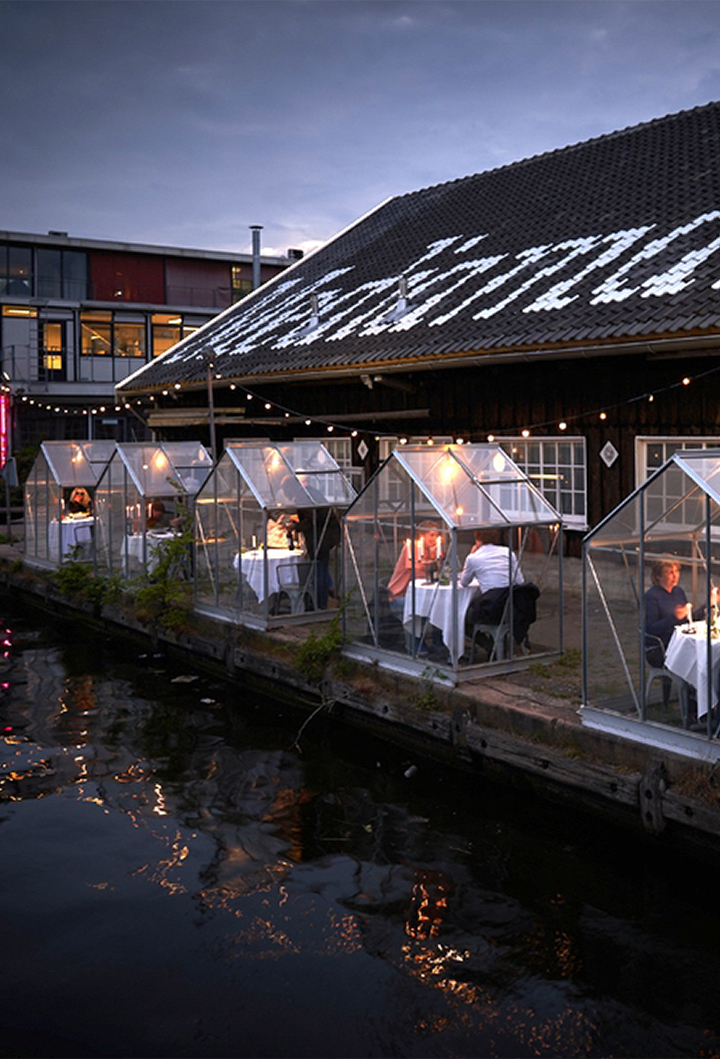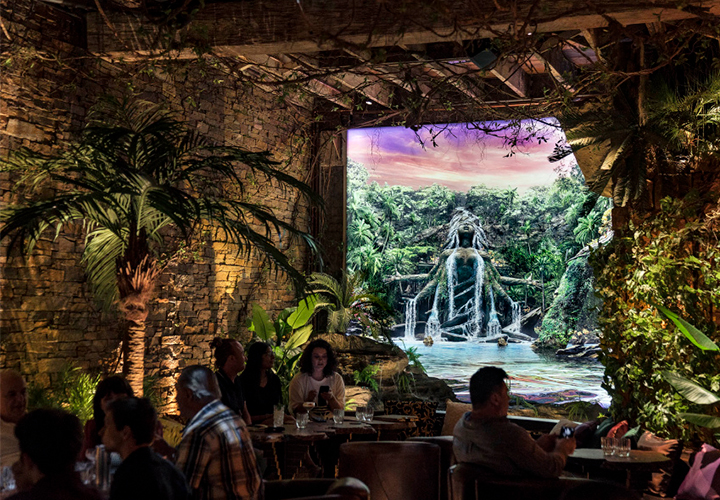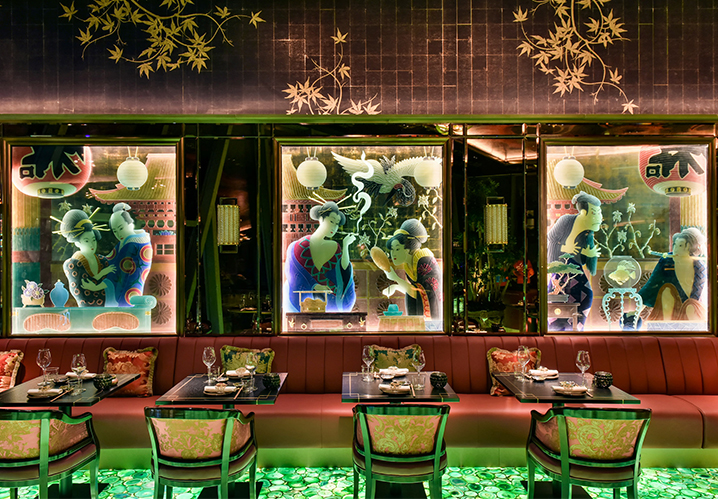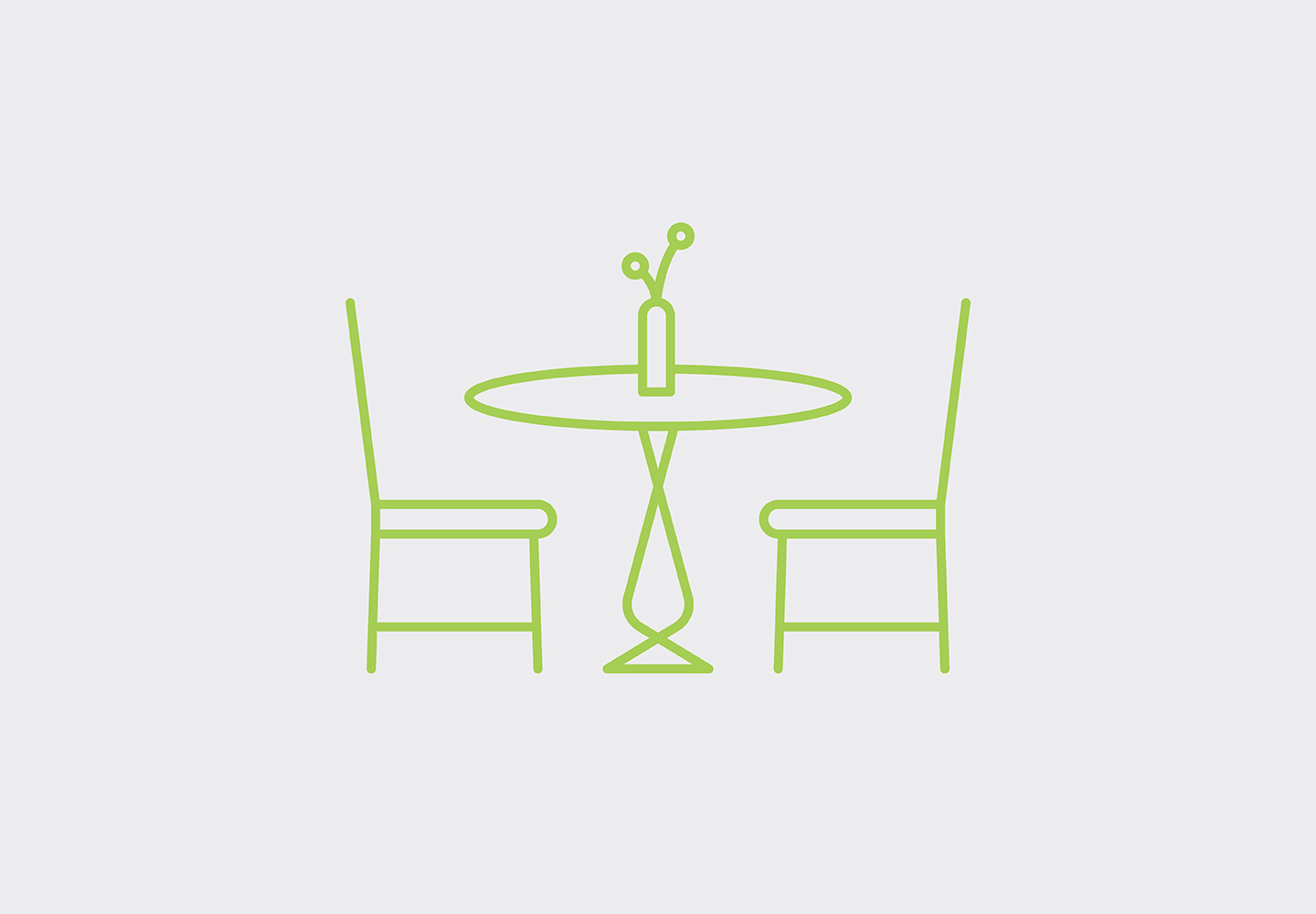Hotels, bars and restaurants may look very different in a post-COVID world.
If you’ve been racing back to bars, cafes, restaurants and hotels now that coronavirus restrictions are lifting, you may have noticed that your favourite venues look a little different.
For all hospitality venues, the first priority is hygiene and safety. Venues are improving their cleaning regimes and communicating these changes with signage and visual markers. You can download free posters, signs and floor stickers from the NSW Department of Health, Australian Hotels Association NSW or Victorian Government. Remember, a vaccine still looks to be a long way off, so these signs are likely to be in place for a long time – you may prefer to design your own suite of signage to match your branding and interiors.
Looking beyond hygiene and saftey, here are a few emerging trends we’re eyeing…
Rethinking wayfinding and experiential graphics at bars and restaurants
According to a trends report from Roar in Dubai, escapist restaurant interiors could be a “lasting design legacy of the pandemic”.
After being cooped up in our homes for so long, we’re looking for places to escape to. We crave exotic destinations that feel nothing like our homes.
Expect to see more decadent, surreal, other-worldly interiors and experiential graphics like you’d find inside The Ivy Asia in London and Saga Bar in Chippendale, Sydney.
We may also see more intimate dining pods that minimise the risk of contagion between guests. We love these corona-proofed huts designed by Mediamatic, an art centre in Amsterdam (pictured below). Each miniature greenhouse cordons off guests and expands the restaurant’s footprint onto the pavement outside to enable social distancing.
Rethinking wayfinding & experiential graphics inside hotels
The hotel occupancy rate fell drastically in March, and by April, eight out of 10 hotel rooms in Sydney and Melbourne lay empty every night of the week, according to AFR. While occupancy rates remain lower than usual, it’s actually the perfect time to think about repurposing different spaces within a hotel. Many hotels are already being used to quarantine travellers from overseas, but it’s a good time to explore other revenue streams.
With international tourists unlikely to return any time soon, is it possible to lease unused hotel rooms as office space or wellness clinics, for example? Now that conferences and events are on hold, can vast ballrooms and conference halls be reimagined as experiential spaces for guests to enjoy? If guests are wary of congregating at buffets and restaurants, can these spaces be reimagined or made more agile?
If you are using spaces in new ways, you may need to update your hotel wayfinding system to redirect people. To minimise staff interaction and the risk of contagion, it’s a good idea to provide maps and directions before check-in. You can send directions directly to people’s mobile phones or via signs embedded with QR codes. To guide people to adaptable spaces that have multiple uses, it’s a good time to implement a digital wayfinding system that can be updated in real-time.
Initially, the coronavirus may lead to more minimalist hotels. Instead of intricate, hard-to-clean furniture and adornments, think pared back, elegant interiors with a mere splash of ornamentation. Over time, people will seek out hotels that provide a sense of escape, or extraordinary experiences. Environmental graphics and digital installations can add layers of discovery to hotel spaces, providing moments of joy and surprise as guests journey through your hotel.
Things to consider
Unfortunately, the coronavirus has shown how vulnerable the hospitality industry is to future pandemics. While hotel occupancy levels are lower, it’s the perfect time to create more resilient, adaptive spaces, supported by updatable, contactless wayfinding systems.
For bars and restaurants, try experimenting with more memorable, escapist or surprising experiences for your guests. This is an opportunity for reinvention, and as a studio that works with hotels and hospitality venues around Australia, we’re excited at what lies ahead.
If you are interested in brainstorming ways of using wayfinding and environmental graphics to build more resilient and engaging hospitality venues, send a note to [email protected]



